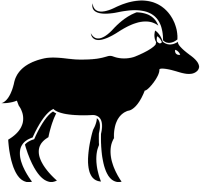Screw-worms
Screw-worms are a class of virid marine creatures who in nature attach themselves to detritus on the sea bed and aid its decomposition. Consequently they also attach themselves to wooden piers and the hulls of sailing vessels. They are particularly active in warm, nutrient-rich waters, where they can burrow into an unprotected ship's hull and cause terrible damage within a few weeks.
Faunaplugin-autotooltip__small plugin-autotooltip_bigFauna
List of animals of all kinds, both red-blooded and virid, domesticated and wild.
Subcategories
Articles
All
Red-blooded Fauna
Virid Fauna
topics sci1
 This is in a series of articles about Animalsplugin-autotooltip__small plugin-autotooltip_bigFauna
This is in a series of articles about Animalsplugin-autotooltip__small plugin-autotooltip_bigFauna
List of animals of all kinds, both red-blooded and virid, domesticated and wild.
Subcategories
Articles
All
Red-blooded Fauna
Virid Fauna
topics sci1.
Immature screw-worm larvae float freely in the water, attaching themselves to a suitable surface when they find it. As they grow they extend a spiked proboscis into the surface they rest on, excreting digestive enzymes which dissolve the surrounding material and allowing the spike to screw deeper. They feed both from decomposed wood and from nutrients in the water, which they collect from reddish fernlike fronds which they extend from their body. Sailing ships make an ideal habit, since not only do they have a firm, nutrient rich wooden hull, but moving through the water provides a constant source of nutrients and oxygen.
Numerous solutions to the problem of screwworms and other hull parasites have been tried, the simplest and most common being corking, in which soft wooden panels are nailed to the outer hull, which can be regularly and easily replaced. Hull paint is also another solution, in which a thick, tarry paste containing various toxins is painted hot onto the hull. Hull paint is effective but has to be reapplied regularly in a dry-dock. Its toxic nature makes it hazardous to sailors or dockers painting it on, since the fumes cause dizziness and nausea. The toxins also leach into the waters of harbours, killing all marine life nearby. Though this keeps away predators and nuisance viridplugin-autotooltip__small plugin-autotooltip_bigVirid
Referring to the Virid Kingdom of flora and fauna, toxic to human life. fish, and prevents fouling of ropes, buoys and other harbour equipment, it allows the profusion of weeds and the algae which cause the poisonous seahars. Most modern harbours therefore need regular dredging to clear them of weeds.
Ironoke ships are more resistant to screw-worms since the hardness of the wood and natural biotoxic enzymes protect them from fouling for a while. However, ironoke ships more than a few years old lose this natural protection and require application of paint.
The best solution for fouling was discovered by the Sann'ali merchant navy, who built ship hulls of golden perian wood. Golden perian contains particles of elemental copper, which the plant uses to repel boring parasites, but is also highly effective at repelling screwworms.
